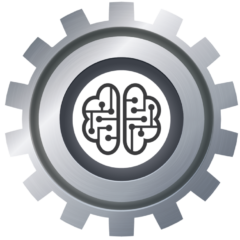Neuro-Linguistic Programming (NLP) and Neuroplasticity are two fascinating fields that have garnered significant attention in their respective domains. NLP focuses on understanding the interplay between language, thought patterns, and behavior, while Neuroplasticity delves into the brain’s remarkable ability to adapt and rewire itself. In recent years, researchers and practitioners have started exploring the intriguing connection between these two disciplines, seeking to unlock new insights and potential applications. This article aims to shed light on the relationship between NLP and Neuroplasticity, exploring how harnessing the brain’s plasticity can enhance NLP techniques and improve personal development strategies.
- Rewiring Thought Patterns with NLP: Neuro-Linguistic Programming posits that language and thought patterns shape our perceptions and behaviors. By examining the structure and content of language used internally and externally, NLP offers tools to identify and modify unhelpful thought patterns. This is where the connection with Neuroplasticity comes into play. The brain’s ability to reorganize and form new neural connections means that individuals can actively work on rewiring their thought patterns through consistent NLP practices. Techniques such as reframing negative self-talk, visualizations, and anchoring positive emotions can promote synaptic changes in the brain, leading to healthier cognitive patterns and behavior.
- NLP for Personal Growth and Emotional Resilience: Neuroplasticity research has shown that experiences and learning can physically alter the structure of the brain. In the context of NLP, this implies that intentional efforts to adopt empowering linguistic and mental strategies can lead to lasting changes in an individual’s emotional resilience and overall well-being. By combining NLP techniques with the understanding of brain plasticity, individuals can embark on a journey of personal growth and self-improvement. Emphasizing positive language and focusing on solutions rather than problems can help create enduring neural pathways that support emotional regulation and adaptive coping mechanisms.
- NLP Training for Cognitive Enhancement: NLP has found applications beyond personal development, including fields like education and coaching. By integrating knowledge from Neuroplasticity research, NLP trainers can design more effective cognitive enhancement programs. Understanding how the brain forms new connections through repeated learning experiences allows trainers to structure NLP exercises in a way that maximizes neuroplastic changes. This can lead to improved cognitive functions such as memory, focus, and creative thinking. Moreover, by fostering a growth mindset through NLP, individuals are more likely to embrace challenges, view failures as opportunities for learning, and, ultimately, enhance their capacity for lifelong learning.
In Summary
The emerging relationship between Neuro-Linguistic Programming and Neuroplasticity offers exciting prospects for personal development, emotional resilience, and cognitive enhancement. By recognizing the brain’s capacity for change and adaptation, NLP practitioners can design more targeted and effective interventions to help individuals transform their thought patterns and behaviors positively. As research continues to unveil the intricacies of brain plasticity and its relevance to NLP, the potential for unlocking human potential and well-being through this combined approach becomes increasingly promising.
 You can check out Matt’s LinkedIn account, Youtube Channel, or Podcast.
You can check out Matt’s LinkedIn account, Youtube Channel, or Podcast.Introducing my new books, ‘The Art of Critical Thinking’ and ‘The Critical Thinking Model’. Both can be read for free with Kindle Unlimited or $2.99 each via Kindle.
